International Women in Engineering Day
Posted on by
June 23, 2023 is International Women in Engineering Day. In the United States, women make up 14% of the engineering workforce (15% internationally).[1] In 2020, 24% of bachelor’s degrees in engineering were earned by women, and women of color earned 10% of the total engineering degrees.[1] The National Institute for Occupational Safety and Health (NIOSH) understands the importance of diversity throughout the STEM fields and in occupational safety and health. To celebrate International Women in Engineering Day we are highlighting some of the amazing engineers right here at NIOSH.
Barb Alexander, PhD, PE, CIH
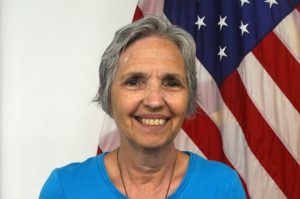 Dr. Alexander has worked in the Engineering and Physical Hazards branch in the NIOSH Division of Field Studies and Engineering for 9 years. Her projects include creating and evaluating engineering controls to prevent hazardous exposures in the workplace including silica from sand moving during hydraulic fracturing; products of incomplete combustion on firefighter clothing; hazardous materials during a potential terrorist attack; and noise, carbon monoxide, fine particulates, and respirable crystalline silica dust during landscaping work.
Dr. Alexander has worked in the Engineering and Physical Hazards branch in the NIOSH Division of Field Studies and Engineering for 9 years. Her projects include creating and evaluating engineering controls to prevent hazardous exposures in the workplace including silica from sand moving during hydraulic fracturing; products of incomplete combustion on firefighter clothing; hazardous materials during a potential terrorist attack; and noise, carbon monoxide, fine particulates, and respirable crystalline silica dust during landscaping work.
What inspired you to be an engineer?
I was probably most inspired by the space program. I watched many spacecraft launches on TV as a young girl. When I was in high school, I enjoyed math and science, and I wanted a college major that would involve math and science.
Menekse Barim, PhD
 Dr. Menekse Barim has extensive experience in the field of industrial and systems engineering. She earned her BS in industrial engineering with a double major in management from Atilim University in Ankara, Turkiye. Her dedication to research led her to pursue a MISE and a PhD in industrial and systems engineering at Auburn University. During her doctoral studies, Dr. Barim focused on cutting-edge MRI research aimed at improving ergonomic modeling by defining and estimating biomechanically relevant low back structures.
Dr. Menekse Barim has extensive experience in the field of industrial and systems engineering. She earned her BS in industrial engineering with a double major in management from Atilim University in Ankara, Turkiye. Her dedication to research led her to pursue a MISE and a PhD in industrial and systems engineering at Auburn University. During her doctoral studies, Dr. Barim focused on cutting-edge MRI research aimed at improving ergonomic modeling by defining and estimating biomechanically relevant low back structures.
Dr. Barim’s current research in the NIOSH Division of Field Studies and Engineering focuses on improving workers’ conditions, particularly by enhancing existing ergonomic assessment tools. Additionally, she seeks to track human body motions using wearable sensors and develop algorithms for automated lifting risk assessment. Ultimately, her objective is to address worker safety and health challenges while harnessing the opportunities presented by new technological developments. She joined the American National Standards Society for Testing (ASTM) F48 committee, which is dedicated to developing safety standards for industrial exoskeletons.
What inspired you to be an engineer?
My interest in engineering started a young age with inspiration from both of my parents. Coming from an engineering family made me aware of what I can do with my creativity, teamwork, structural analysis, communication, attention to detail, and problem-solving skills.
Cherie Estill, PhD, PE
 Dr. Estill is an industrial and systems engineer who has spent her career designing and recommending engineering changes to reduce hazardous exposures for workers. She works in the NIOSH Division of Field Studies and Engineering. Dr. Estill designed ventilation systems to reduce chemical exposures in workplaces, especially for small businesses that do not have access to engineering and occupational safety and health expertise. An example is adaptable ventilation for nail salon tables for workers who apply acrylic nails. Dr. Estill also developed engineering solutions to reduce workers potential for developing musculoskeletal disorders, also known as ergonomics. Dr. Estill has designed a variety of workstations and tools for agriculture, construction, and manufacturing workers that help reduce the forces on the body that can cause injury. An example is a tool to help workers attach wires to appliances that moves forces to the entire hand instead of just the fingers.
Dr. Estill is an industrial and systems engineer who has spent her career designing and recommending engineering changes to reduce hazardous exposures for workers. She works in the NIOSH Division of Field Studies and Engineering. Dr. Estill designed ventilation systems to reduce chemical exposures in workplaces, especially for small businesses that do not have access to engineering and occupational safety and health expertise. An example is adaptable ventilation for nail salon tables for workers who apply acrylic nails. Dr. Estill also developed engineering solutions to reduce workers potential for developing musculoskeletal disorders, also known as ergonomics. Dr. Estill has designed a variety of workstations and tools for agriculture, construction, and manufacturing workers that help reduce the forces on the body that can cause injury. An example is a tool to help workers attach wires to appliances that moves forces to the entire hand instead of just the fingers.
What inspired you to be an engineer?
I enjoyed and was good at math and science in high school and I loved building or fixing things. I was a little unsure what exactly I would do as an engineer when I started but my college introduced us to the different types of engineering, and it helped me make a decision. I really enjoy learning specific technical skills and then applying them to real world problems.
Ashley Hawke, MS
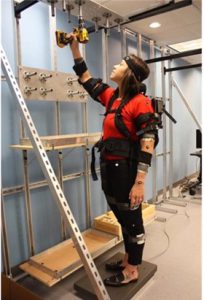
Ms. Ashley Hawke is a biomedical engineer in the Physical Effects Research Branch of the NIOSH Health Effects Laboratory Division. As a valued member of the biomechanics team, she plays an important role in collecting and analyzing physiological responses from subjects engaged in various occupational tasks. Ms. Hawke has started to focus her research on the development and evaluation of exoskeletons in assisting older warehouse workers. It has been reported that MSDs yielded a total cost of about $596 million in the Wholesale and Retail Trade sector per year, with an estimated cost of $9,743 per case. The reported epidemiological studies have also found that older workers (aged 50+ years) are more vulnerable to muscular injuries and are at a greater risk for developing MSDs at the same working conditions compared to younger workers. Additionally, once an individual has experienced musculoskeletal injuries, older workers may take longer to recover than younger workers.
What inspired you to become an engineer?
Math and science were my strong suit throughout school and always the most interesting subjects to me; with both of my parents having very strong science and technical backgrounds, they regularly encouraged me to explore those interests. After a car accident left my dad wheelchair-bound, my family had to navigate a lot of the challenges that came with it, including renovations to make our house more accommodating for a wheelchair and implementing various devices and tools so my dad could continue doing activities and hobbies that he did pre-accident. It was during that time that I discovered biomedical engineering and eventually decided to pursue it as a career, as I experienced first-hand how engineers positively impacted both my dad and family and improved our lives and I wanted to be able to do that for other individuals and families.
Marie Hayden, MS
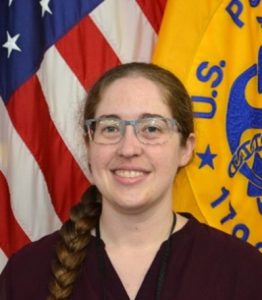 Ms. Hayden has applied her MS in industrial and systems engineering degree at NIOSH to review the effectiveness of equipment installed as safety interventions to reduce work-related injuries. In one example of this work, Ms. Hayden reviewed safety intervention grants that documented employers’ and employees’ experience when installing robotic and automated equipment in manufacturing industries, as part of a partnership with the Ohio Bureau of Workers’ Compensation. This work aims to improve health and safety of workers by capitalizing on the latest technology. She is currently working in the NIOSH Health Hazard Evaluations program. Employees, unions, employers, as well as federal, state, or local agencies can request a no-cost evaluation from NIOSH. In her role in the health hazard evaluation program Ms. Hayden aids in evaluating workplace concerns such as noise or musculoskeletal disorders and offers guidance on how to address those concerns.
Ms. Hayden has applied her MS in industrial and systems engineering degree at NIOSH to review the effectiveness of equipment installed as safety interventions to reduce work-related injuries. In one example of this work, Ms. Hayden reviewed safety intervention grants that documented employers’ and employees’ experience when installing robotic and automated equipment in manufacturing industries, as part of a partnership with the Ohio Bureau of Workers’ Compensation. This work aims to improve health and safety of workers by capitalizing on the latest technology. She is currently working in the NIOSH Health Hazard Evaluations program. Employees, unions, employers, as well as federal, state, or local agencies can request a no-cost evaluation from NIOSH. In her role in the health hazard evaluation program Ms. Hayden aids in evaluating workplace concerns such as noise or musculoskeletal disorders and offers guidance on how to address those concerns.
What inspired you to be an engineer?
While completing my undergraduate degree I took the applied ergonomic course offered in the industrial and systems engineering program. I enjoyed the course taught by the person who became my graduate advisor. I use that knowledge I gained even now and continue to focus on ergonomics. My masters program was funded through a NIOSH training program grant.
Deb Hirst, PhD, PE
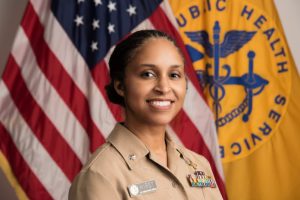 Dr. Hirst is a civil and environmental health engineer and is the Deputy Branch Chief for the Engineering and Physical Hazards Branch in the NIOSH Division of Field Studies and Engineering. In her management position, she oversees the branch’s engineering research. Before entering management, she evaluated engineering controls and work practices in human and veterinary healthcare settings, particularly with workers handling hazardous drugs. Hazardous drugs (mostly antineoplastic drugs used to treat cancer) are very beneficial to the patient but can cause adverse health effects to the healthcare worker. Prior to researching hazardous drugs, Dr. Hirst evaluated engineering control technologies to reduce workers’ exposures to occupational safety and health hazards in various industries, including formaldehyde; diacetyl and other flavorings; and indium tin oxide. The formaldehyde research was one of the first studies to evaluate formaldehyde using the NIOSH analytical method.
Dr. Hirst is a civil and environmental health engineer and is the Deputy Branch Chief for the Engineering and Physical Hazards Branch in the NIOSH Division of Field Studies and Engineering. In her management position, she oversees the branch’s engineering research. Before entering management, she evaluated engineering controls and work practices in human and veterinary healthcare settings, particularly with workers handling hazardous drugs. Hazardous drugs (mostly antineoplastic drugs used to treat cancer) are very beneficial to the patient but can cause adverse health effects to the healthcare worker. Prior to researching hazardous drugs, Dr. Hirst evaluated engineering control technologies to reduce workers’ exposures to occupational safety and health hazards in various industries, including formaldehyde; diacetyl and other flavorings; and indium tin oxide. The formaldehyde research was one of the first studies to evaluate formaldehyde using the NIOSH analytical method.
What inspired you to be an engineer?
I have always been curious especially as a child. I would take apart my brother’s calculators, build dollhouses out of unique materials, ask lots of questions, etc. It never dawned on me as a little girl that I could be an engineer. I started off as premed at the University of Alabama at Birmingham; however, I started to question my future career path. After discussing my likes and dislikes with my academic advisor, I decided to switch majors and pursue an undergraduate degree in Civil and Environmental Engineering. Little did I know my life was already paved to be an engineer from taking apart gadgets to receiving the Robert E. McNair Science Award in high school which honored students who achieved high success in science and engineering. I never put two and two together until many years later. Engineering is so diverse, and you really can do almost anything! My first engineering job was working at the Birmingham Water Works and Sewer Board. I collected and tested drinking water samples in a variety of sewer pipes, such as cast iron and stainless steel. After I graduated with my doctorate, I worked as a project manager in construction for a short period of time before being commissioned into the United States Public Health Service and starting my impactful career at NIOSH.
Selcen Kilinc-Balci, PhD, MSc, MBA
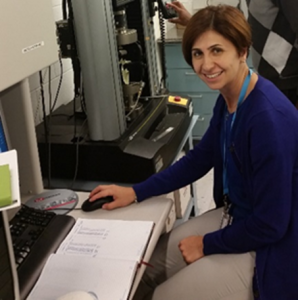 Dr. Selcen Kilinc-Balci has been a senior research engineer at the National Personal Protective Technology Laboratory since 2010. In her role, she spearheads and conducts research in the field of personal protective equipment (PPE). She has BSc and MSc degrees in textile engineering and an MBA degree. With over 20 years of experience in PPE, clothing comfort, testing/evaluation, fibers/fabrics, standards, and regulations, she brings a wealth of expertise to her work. At NIOSH, she has applied her PhD in the polymer and fiber engineering to characterize variety of personal protective equipment to improve the protection and comfort properties as well as to bring science to the standards. Notably, she contributed to the development of CDC’s PPE guidelines in response to 2014 Ebola outbreak and COVID-19 pandemic. She served on the World Health Organization (WHO) Technical Advisory Group on PPE for COVID-19, WHO Advisory Committee for Innovative PPE, US COVID-19 Joint Coordination Cell, and US National Strategy for a Sustainable Public Health Supply Chain Workgroup. She worked on several projects funded by CDC, NASA, NTC, USDA, and US Air Force. As an active member of technical committees within ASTM International, ISO, AAMI, NFPA, AATCC, and TAPPI, Dr. Kilinc-Balci takes a lead role in advancing and enhancing technical standards in PPE. She also currently serves as the Co-Assistant Coordinator for NIOSH’s PPT Core and Specialty Program.
Dr. Selcen Kilinc-Balci has been a senior research engineer at the National Personal Protective Technology Laboratory since 2010. In her role, she spearheads and conducts research in the field of personal protective equipment (PPE). She has BSc and MSc degrees in textile engineering and an MBA degree. With over 20 years of experience in PPE, clothing comfort, testing/evaluation, fibers/fabrics, standards, and regulations, she brings a wealth of expertise to her work. At NIOSH, she has applied her PhD in the polymer and fiber engineering to characterize variety of personal protective equipment to improve the protection and comfort properties as well as to bring science to the standards. Notably, she contributed to the development of CDC’s PPE guidelines in response to 2014 Ebola outbreak and COVID-19 pandemic. She served on the World Health Organization (WHO) Technical Advisory Group on PPE for COVID-19, WHO Advisory Committee for Innovative PPE, US COVID-19 Joint Coordination Cell, and US National Strategy for a Sustainable Public Health Supply Chain Workgroup. She worked on several projects funded by CDC, NASA, NTC, USDA, and US Air Force. As an active member of technical committees within ASTM International, ISO, AAMI, NFPA, AATCC, and TAPPI, Dr. Kilinc-Balci takes a lead role in advancing and enhancing technical standards in PPE. She also currently serves as the Co-Assistant Coordinator for NIOSH’s PPT Core and Specialty Program.
What inspired you to become an engineer?
My proficiency in math and science laid a strong foundation for my journey. The allure of resolving intricate problems and creating transformative designs that contribute to a better world became my driving force, ultimately inspiring me to pursue a career as an engineer. The prospect of developing cutting-edge technologies and innovative products that enhance people’s lives further fueled my passion for this field.
Mirle Peña, MS
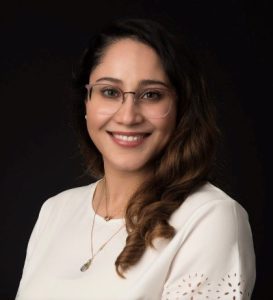 Ms. Peña is a biomedical engineer in the in the Division of Field Studies and Engineering. Her research focuses on using engineering controls to reduce occupational hazards such as aerosols. Her work to mitigate infectious aerosol exposures inside ambulances aims to further protect first responders when performing aerosol generating procedures, such as intubation, on potentially infectious patients. She implemented two engineering control solutions inside the ambulance. The first one was a containment pod connected to a HEPA vacuum to remove aerosols when intubating a patient. The second control was placing a portable HEPA air cleaner unit inside the ambulance to remove infectious aerosols.
Ms. Peña is a biomedical engineer in the in the Division of Field Studies and Engineering. Her research focuses on using engineering controls to reduce occupational hazards such as aerosols. Her work to mitigate infectious aerosol exposures inside ambulances aims to further protect first responders when performing aerosol generating procedures, such as intubation, on potentially infectious patients. She implemented two engineering control solutions inside the ambulance. The first one was a containment pod connected to a HEPA vacuum to remove aerosols when intubating a patient. The second control was placing a portable HEPA air cleaner unit inside the ambulance to remove infectious aerosols.
Ms. Peña also collaborates on projects that reduce the hazards faced by landscaping workers including noise, silica dust and carbon monoxide exposures when working with landscaping tools. She is also the assistant coordinator on the NORA Construction Sector Council where she works to prevent construction hazards at the workplace such as falls and struck-by incidents. Around 30% of construction workers speak Spanish, and as a native Spanish speaker, she helps translate and develop communication products to reach all construction workers to improve health equity.
What inspired you to be an engineer?
I studied Biotechnology engineering during my undergraduate degree and did my master’s in biomedical engineering. I have always wanted to work towards promoting public health, and engineering helps bring solutions to populations that need it. As engineers, we help solve problems and help communities. As a female Latin engineer, it’s my passion to help improve health equity. Being an engineer gives me the opportunity to work on important issues to improve people’s health and quality of life and focus on communities that need it the most.
 Casey Stazick, BS
Casey Stazick, BS
Ms. Stazick is a materials engineer with NIOSH, at the Spokane Mining Research Division. She earned a bachelor’s degree in chemical and biochemical engineering from the Colorado School of Mines. Her research is centered around safety issues associated with the corrosion of metal underground mine support. She loves having the opportunity to apply lab and field techniques to improve safety in mines faced with ground support challenges.
What inspired you to become an engineer?
Having science teachers throughout my early education that strongly supported my interests in science pushed me to chase my dreams to be an engineer. Once I reached high school, I became very interested in biology and chemistry labs. It was so interesting to break down processes that create things we use in everyday life, and I loved the hands-on experience.
Sherry Xu, PhD
 Dr. Sherry Xu is a biomedical research engineer in the Physical Effects Research Branch of the NIOSH Health Effects Laboratory Division. She has been a principal investigator of several projects on the development and evaluation of engineering intervention methods and technologies for controlling hand-transmitted vibration exposure and health effects. Prolonged and intensive exposure to the vibration may cause hand-arm vibration syndrome or vibration-induced white finger. Dr. Xu has taken a leading role in developing new methods for measuring vibration exposure, conducted many experiments, and assessed the effectiveness of several intervention methods and technologies such as vibration-reducing gloves, mechanical arms, and exoskeletons. She is a major member of the human vibration team that has won several science awards, including the international 2023 Taylor Award issued by the International Advisory Committee on Hand-Arm Vibration. As a female engineer, she possesses a deep understanding of the unique challenges faced by women in the engineering field, enhancing her ability to address and overcome such obstacles.
Dr. Sherry Xu is a biomedical research engineer in the Physical Effects Research Branch of the NIOSH Health Effects Laboratory Division. She has been a principal investigator of several projects on the development and evaluation of engineering intervention methods and technologies for controlling hand-transmitted vibration exposure and health effects. Prolonged and intensive exposure to the vibration may cause hand-arm vibration syndrome or vibration-induced white finger. Dr. Xu has taken a leading role in developing new methods for measuring vibration exposure, conducted many experiments, and assessed the effectiveness of several intervention methods and technologies such as vibration-reducing gloves, mechanical arms, and exoskeletons. She is a major member of the human vibration team that has won several science awards, including the international 2023 Taylor Award issued by the International Advisory Committee on Hand-Arm Vibration. As a female engineer, she possesses a deep understanding of the unique challenges faced by women in the engineering field, enhancing her ability to address and overcome such obstacles.
What inspired you to become an engineer?
Growing up in a household where my dad, a math professor, taught students of all ages, I was immersed in a world of numbers, equations, and problem-solving. From an early age, I developed a strong interest in math and science, recognizing their fundamental role in understanding the world around us. As I witnessed the remarkable advancements in technology and their impact on society, my excitement and fascination only grew. I became increasingly determined to pursue a career as an engineer. What particularly inspires me is the opportunity to improve the lives of workers in various workplaces. By harnessing the power of engineering, I aim to enhance safety, efficiency, and overall well-being in industries.
Susan Xu, PhD
 Dr. Susan Xu has served as a general engineer at the NIOSH National Personal Protective Technology Laboratory since October 2018. She jointed in NIOSH in June 2016 as a fellow. Dr. Xu has a PhD degree in mechanical engineering and a graduate level certificate of applied statistics. She has worked as a mechanical engineer and analyst conducting public health research for over 20 years at the university, industry, and government level and authored or coauthored over 20 publications. Her research areas are biomechanical engineering, occupational safety for the prevention of work-related illness and injury, and personal protective technology research for gloves, powered air-purifying respirators, self-contained breathing apparatus, and elastomeric half mask respirators.
Dr. Susan Xu has served as a general engineer at the NIOSH National Personal Protective Technology Laboratory since October 2018. She jointed in NIOSH in June 2016 as a fellow. Dr. Xu has a PhD degree in mechanical engineering and a graduate level certificate of applied statistics. She has worked as a mechanical engineer and analyst conducting public health research for over 20 years at the university, industry, and government level and authored or coauthored over 20 publications. Her research areas are biomechanical engineering, occupational safety for the prevention of work-related illness and injury, and personal protective technology research for gloves, powered air-purifying respirators, self-contained breathing apparatus, and elastomeric half mask respirators.
Dr. Xu is a highly curious individual and has a passion for her research. During her free time, Dr. Xu enjoys spending time with her family and friends; engaging in outdoor activities such as hiking and biking; and yoga.
What Inspired you to become an engineer?
What inspired me to become an engineer was a desire to use my knowledge and skills to create solutions to real world problems that could be put into practice.
Liying Zheng, PhD
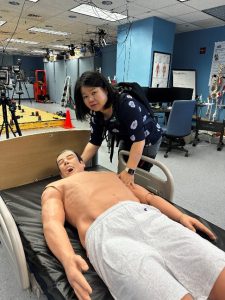 Dr. Liying Zheng is a biomechanical research engineer in the Physical Effects Research Branch of the NIOSH Health Effects Laboratory Division. She is the principal investigator and a leading researcher of an ongoing project aimed at investigating the feasibility of exoskeleton use in patient handling. The healthcare industry is aware of the elevated risk of work-related Musculoskeletal Disorders faced by predominantly female healthcare workers, with approximately 90% of registered nurses and nursing/home health aides being women. Dr. Zheng’s unwavering dedication lies in enhancing existing intervention methods and exploring innovative assistive technologies to mitigate this risk. As a female engineer, she is keenly attuned to the unique challenges encountered by women in the field and actively strives to protect and support women healthcare workers.
Dr. Liying Zheng is a biomechanical research engineer in the Physical Effects Research Branch of the NIOSH Health Effects Laboratory Division. She is the principal investigator and a leading researcher of an ongoing project aimed at investigating the feasibility of exoskeleton use in patient handling. The healthcare industry is aware of the elevated risk of work-related Musculoskeletal Disorders faced by predominantly female healthcare workers, with approximately 90% of registered nurses and nursing/home health aides being women. Dr. Zheng’s unwavering dedication lies in enhancing existing intervention methods and exploring innovative assistive technologies to mitigate this risk. As a female engineer, she is keenly attuned to the unique challenges encountered by women in the field and actively strives to protect and support women healthcare workers.
What inspired you to become an engineer?
I was fortunate to grow up with parents who were both physics teachers, which helped me develop a deep appreciation for math and science from an early age. I found these subjects fascinating and enjoyed solving problems and exploring the principles behind them. As I grew older, I discovered the field of engineering, which seemed like a natural extension of my interests. The idea of applying scientific principles and mathematical concepts to design and create solutions to real-world problems excited me. The opportunity to make a tangible impact through innovation and problem-solving is what ultimately inspired me to pursue a career as an engineer.
Future Engineers
These are examples of the impressive work being conducted by NIOSH’s women engineers. If you or an engineer you know would like to use your engineering skills to keep workers safe and healthy, please check out Careers at NIOSH.
We will leave you with some advice from these researchers for future engineers.
- Think about where you will be working and how many jobs are available when you pick your college major. Some academic subjects are interesting, but don’t necessarily lead directly to a career, or there is a lot of competition for a few good jobs. –Barb Alexander
- If you do well in math and science you should consider engineering! There are lots and lots of types of engineering and engineers work in all industries. Reach out to people you know who are engineers, ask them what they do, and visit their workplace. – Cherie Estill
- If you have a dream in your heart, go ahead to work hard and achieve your dream. – Susan Xu
- Future female engineers should not be afraid to ask for help and continue to have a healthy curiosity and drive for learning. Do not forget to bring up other women along the way, as you may change someone’s life! – Casey Stazick
- If there is a course that you are interested and have the time to take it go for it. This may help you in the future. – Marie Hayden
- Don’t give up on your dreams. If you enjoy learning how things work, then you may be a future engineer. You don’t have to be the best at math or science as most engineers struggle with these subjects. For all future engineers and early career engineers, get a reliable mentor who is well invested in your career growth. This is so important! You want someone in your corner who encourages you, pushes you to do better, and teaches you not to make the same mistakes they made. As you grow in your career, pay it forward and mentor future engineers. –Deb Hirst
- Being a female engineer is not easy and you will encounter obstacles. It is important to remember that if this is your passion, you deserve a seat at the table. We all suffer from the impostor’s syndrome, so remind yourself constantly that we all started somewhere, and you can be whoever you decide to be. You can’t fail if you keep working hard. – Mirle Pena
- I encourage students and young professionals to cultivate a passion for lifelong learning. I advise volunteering on projects, asking questions, exploring other experts’ areas of expertise, conducting research on subjects of interest, and staying updated with new developments in the field. Additionally, attending networking events, conferences, and similar activities enables you to gain valuable skills, build confidence, and expand industry knowledge. By following this approach, anyone can discover their true passion and advance in their careers. –Menekse Barim
[1] Society of Women Engineers. 2022. Women in Engineering Fast Facts. https://swe.org/research/2021/women-in-engineering-fast-facts/
Posted on by

